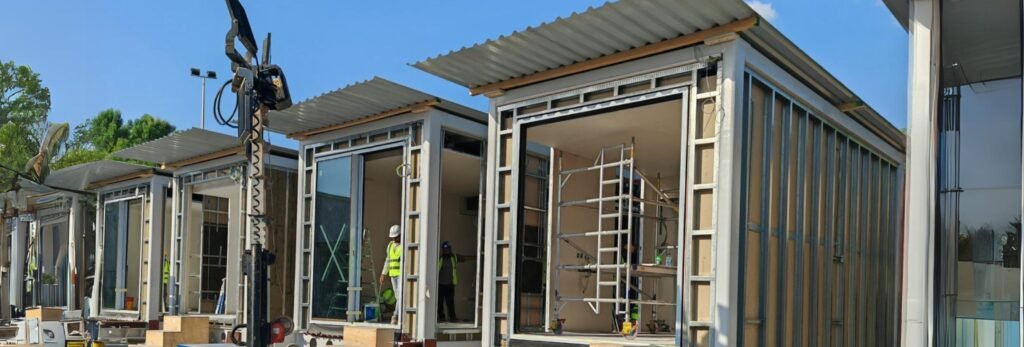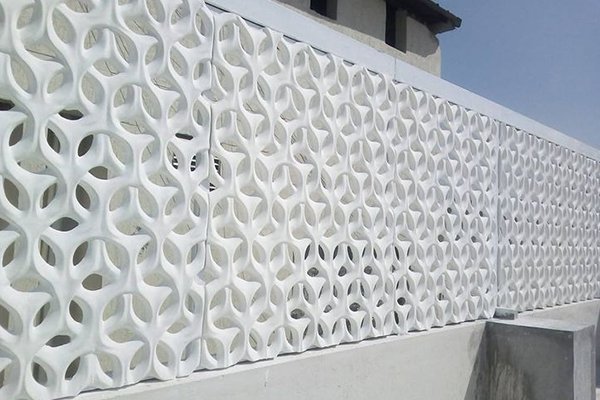
Table of Contents
Introduce
In the field of construction, the choice of materials directly affects the performance, cost and service life of buildings. With the development of science and technology and the improvement of environmental awareness, building materials are also constantly innovating. This article will comprehensively introduce the classification of building types, common building materials, stage scenery materials, sources of building materials, characteristics of fiberglass and its application in construction.
Classification Of Building Types
Buildings can be divided into the following five categories according to their functions and purposes:
Residential buildings
Icluding single-family homes, multi-family apartment buildings, etc., mainly used for living.
Commercial buildings
Such as shopping malls, office buildings, hotels, etc., mainly used for commercial activities.
Industrial buildings
Such as factories, warehouses, etc., mainly used for production and services.
Public buildings
Such as schools, hospitals, libraries, etc., provide public services.
Special buildings
Such as gymnasiums, theaters, museums, etc., have specific functions and uses.

Common Building Materials
There are many types of building materials, and the following are common ones:
- Concrete: a mixture of cement, sand, gravel and water, with good strength and durability, widely used in foundations, walls and structural parts.
- Steel: It has high strength and good ductility, and is often used in load-bearing components such as beams and columns of steel structure buildings.
- Wood: It is a natural material with good thermal insulation and aesthetics, and is often used in frame structures, floors and decorations.
- Bricks: It is made of fired clay, has good thermal insulation and fire resistance, and is often used for walls.
- Stone: Such as marble, granite, etc., has good durability and aesthetics, and is often used for exterior walls and floors.
- Glass: Transparent material with good light transmittance and aesthetics, often used for windows and curtain walls.
- Plastic: Lightweight material with good waterproofness and corrosion resistance, often used for pipes and decorations.
- Ceramics: It has good heat resistance and corrosion resistance, and is often used for tiles and sanitary ware.
Sources Of Building Materials
The sources of building materials are diverse, mainly including:
- Natural materials: such as wood, stone, clay, etc., directly obtained from nature.
Industrial products: such as steel, concrete, glass, etc., obtained through industrial production processes. - Recycled materials: such as recycled concrete, recycled steel, etc., obtained by recycling and reusing old materials.
- Synthetic materials: such as plastics, composite materials, etc., obtained by chemical synthesis or composite processes.

Fiberglass Building Materials
Fiberglass is a slender fiber made of molten glass. It has many excellent properties, which makes it widely used in the construction field.
Physical And Chemical Properties
- High strength and low density: The tensile strength of fiberglass can reach more than 3.5GPa, and the density is about 2.6g/cm³, which is much lower than traditional metal materials, so that it can reduce the weight of the structure while maintaining sufficient strength.
- Corrosion resistance: It has good resistance to most acid, alkali and salt solutions, and is suitable for various harsh environments.
- Temperature resistance: It can be used normally in the temperature range of -70°C to 300°C, and is suitable for a variety of environmental conditions.
- Electrical insulation: It has excellent electrical insulation properties and is an ideal material for making electrical product housings.
- Light transmittance: Partially transparent or translucent fiberglass can be used for lighting or decorative purposes.
Production Process
The production of fiberglass mainly includes the following steps:
1.Raw material preparation: Select silica sand, limestone, calcite, etc. as the main raw materials, and mix them evenly in a certain proportion.
2.Melting: Put the mixed raw materials into the furnace and heat them to above 1400°C to completely melt them into liquid glass.
3.Wire drawing: Use a high-speed rotating platinum sluice plate or other methods to pull the molten glass out of the small holes to form slender fibers.
4.Cooling and coating: The drawn fibers are quickly cooled and solidified, and a layer of coupling agent is coated on their surface to improve the bonding strength with other matrix materials.
5.Collection and processing: Collect the cooled fibers and perform subsequent processing such as cutting and weaving as needed.
Application In The Field Of Construction
- Reinforced concrete: Adding short-cut glass fibers to concrete can significantly improve its crack resistance and toughness, and is used to manufacture prestressed components, bridge deck pavement, etc.
- Composite panels: By compounding with organic materials such as resins, lightweight and high-strength panels are prepared, which are widely used in building components such as walls, roofs, and partitions.
- Thermal insulation materials: Glass fiber wool or blankets have good thermal insulation effects and are often used in the insulation layer of building exterior walls, roofs and pipes.
- Decorative materials: Transparent or colored fiberglass products can be used for indoor and outdoor decoration, such as lighting, sculptures, etc.
- Waterproof materials: Combined with waterproof coatings such as asphalt to enhance its mechanical strength and service life, it is suitable for waterproofing projects in wet areas such as basements and bathrooms.


In Conclusion
Fiberglass will continue to play an important role in the future construction industry due to its unique performance advantages. On the one hand, researchers are committed to developing more environmentally friendly and efficient production technologies to reduce energy consumption and environmental pollution; on the other hand, by improving formula design and processing technology, the comprehensive performance of the product can be further improved and its application range can be expanded. In addition, intelligence and modularization will become new trends in the construction industry, and glass fiber is expected to play a more important role in this process.
In short, as a high-performance building material, glass fiber can not only meet the requirements of modern buildings for beauty, practicality and safety, but also meet the long-term goal of sustainable development. With the continuous advancement and improvement of related technologies, it is believed that glass fiber will show a broader application prospect in the future construction field.

